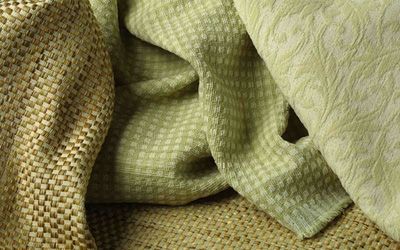Key Takeaways
- Fabric creation begins with harvesting raw materials, which include plant-based fibers like cotton and flax, animal fibers like silk and wool, and synthetic fibers like nylon and polyester.
- These materials undergo processes like cleaning, spinning and weaving to transform them into yarn and then fabric, with techniques varying significantly among the different types of fibers.
- The final steps include treating the fabric to improve its appearance and feel, such as dyeing it and adding finishes, before it's ready for use in everything from clothing to home décor.
So many people underestimate the role fabric plays in their lives. Sure, we all put on clothes every day, many of us without a second thought. But have you ever stopped to think how many important moments and everyday experiences in your life are associated with some form of fabric? From your childhood blanket to your wedding dress, and your favorite worn-out jeans, fabric plays a major role not only in how we live but also how we feel. The look, touch and even scent of a familiar piece of clothing can bring to mind a first love, a cherished vacation memory or simply a sense of comfort.
We also use fabric to express ourselves. Even beyond the world of high fashion and designer labels, many people even feel that putting together outfits is the ultimate form of creative expression. We use different clothing styles, colors, materials and textures to express mood, attitude and personality.
Advertisement
Fabric and clothing also play an important role in religious and social beliefs. From the earliest recorded history, a person's clothes could give us an instant glance into their socio-economic status. Where today we hold those designer tags in highest regard, thousands of years ago, just the fact that one was able to afford clothing at all was a sign of wealth. Today, many religious orders are readily associated with certain types of fabric and clothes, from the bright yellow garb of the Buddhist monk to the heavy black burkas worn by many Muslim females, to the colorful hand-spun clothing associated with traditional African religions.
Above all, fabric serves a practical function. It protects us from cold and heat, the rain and the bright sun. We use blankets to cover ourselves as we sleep and woven rugs to cushion our steps as we walk.
With all of the contributions fabric makes to our everyday lives, many people don't stop to think how fabric is created. The process of turning natural and synthetic fibers into cloth is much more complicated than is commonly thought. In this article, we'll learn how the fibers used to make up fabric are extracted and transformed into the clothing and textiles we're familiar with.
Read on to the next section to learn about the many different materials fabric can be made from and how they are grown and harvested.
Advertisement



